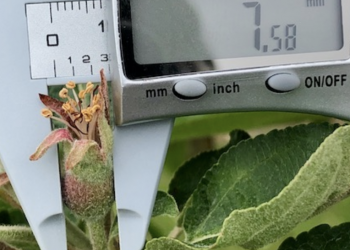Controlling the final fruit number on an apple tree is one of the most economically critical management practices in apple growing. Optimizing fruit numbers within a narrow, economically optimum range is currently imprecisely done by pruning, chemical thinning and remedial hand thinning which is very expensive. Our previous work has shown that precisely controlling crop load has large economic benefits. We have previously developed ideas and tactics to precisely control crop load by calculating the optimum fruit number per tree, manually counting buds, flowers and fruits and by using various computer models we have developed (carbon balance model, fruit growth rate model and the pollen tube growth model) to help growers achieve the optimum number of fruits per tree; however, the process is tedious and time consuming. Through this project we will further develop precision crop load management tools consisting of computer models, machine vision, robotics and decision support tools to which will allow apple growers to accurately calculate a target fruit number for each tree and then quickly count flower buds and later fruitlets using machine vision and geo-referenced maps to guide the severity of pruning and later guide bloom and post-bloom chemical thinning, and lastly to guide human workers when hand thinning to maximize crop value. This project directly addresses SCRI priority area number 3 “to improve production efficiency, handling and processing, productivity, and profitability over the long term” using a systems approach of plant physiology, crop management, computer vision, robotics, economics, sociology and Extension.
UMass is a sub-contractor with Cornell on this Project, Precision Crop Load Management of Apples: USDA-NIFA-SCRI SREP 2020-51181-32197.
